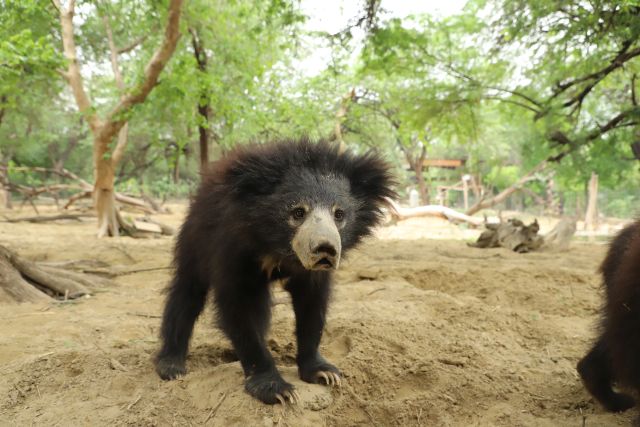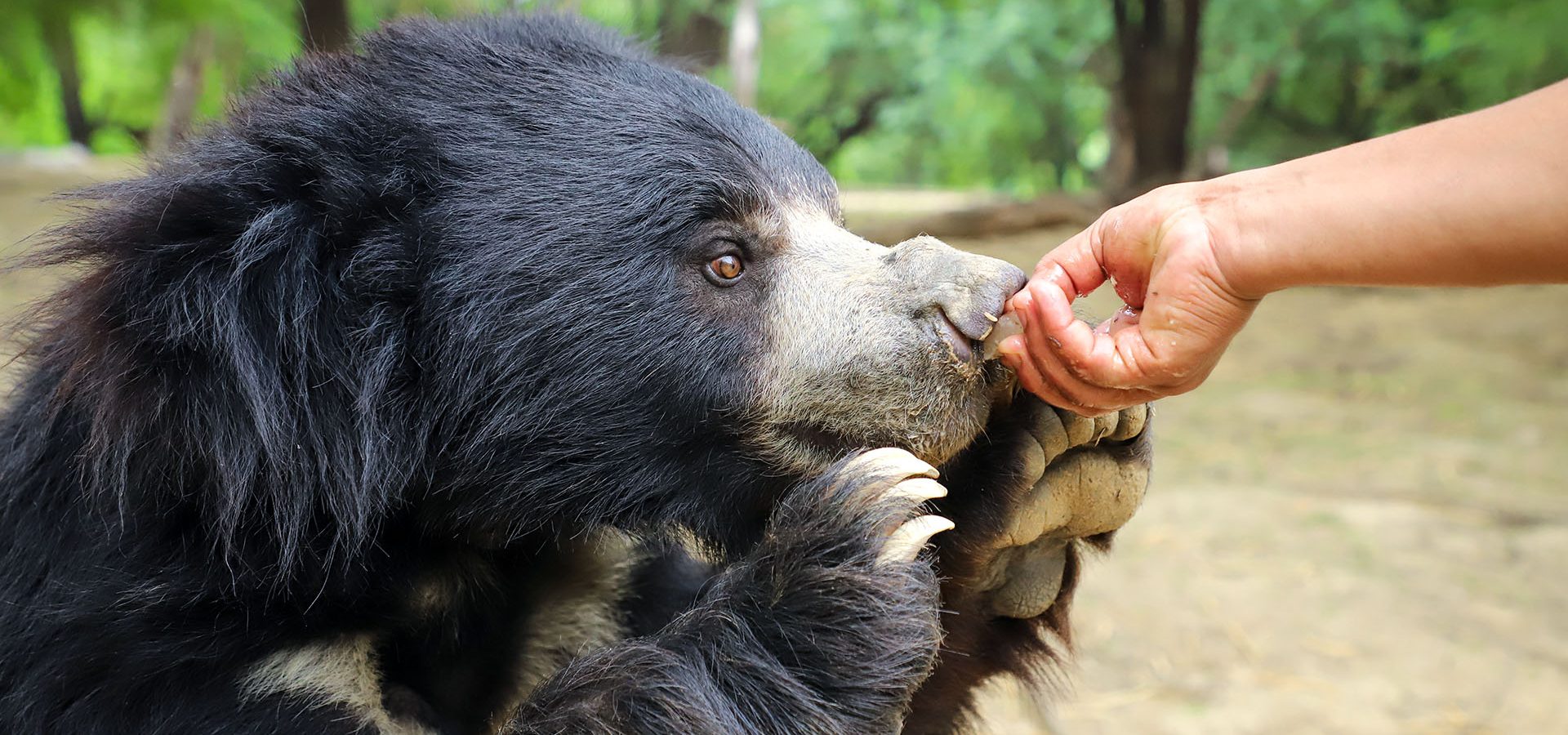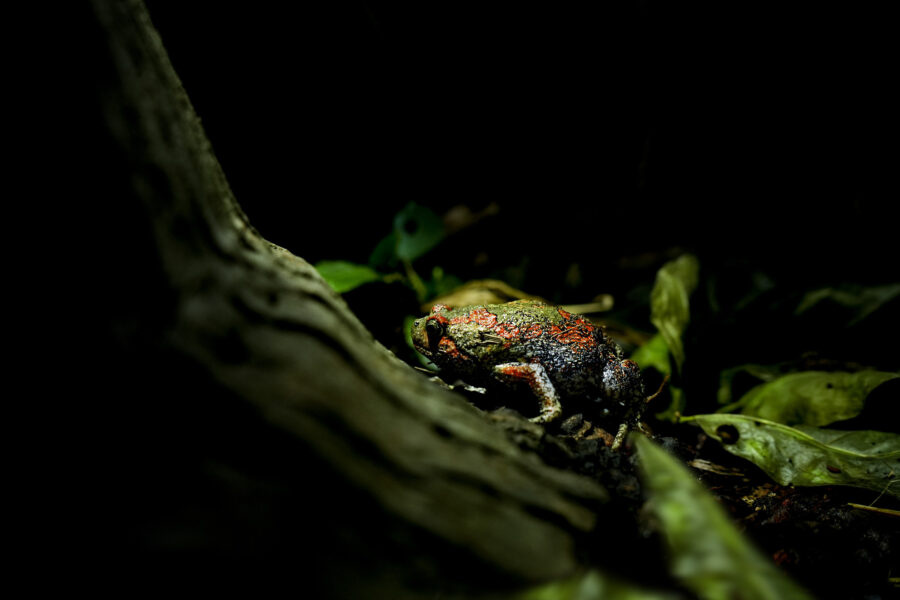If you travel to India to see wildlife, one species you might encounter on a safari is a sloth bear. Have you ever wondered how the sloth bear got its name? If you have, you’re not alone! This bear, which is mostly found in India, has no evolutionary relationship with sloths that live in central and south America. The bears are fast and agile enough to fight off tigers, so it is a common question — “Where did the sloth bear’s name come from?”
The quick explanation is that a European Zoologist in 1791 named George Shaw gave them the name because he thought these animals were a bear-like sloth vs. an actual bear. He gave them the common name “bear sloths.” So what was it about these bears that confused him and made him believe they were sloths? First it must be recognized that ‘sloth bear’ was not the first nor the only name this animal goes by.
In Rudyard Kipling’s “The Jungle Book” Baloo was a sloth bear and Bhalu (pronounced Baloo) in Hindi means “bear.” Technically bhalu means bear, not necessarily sloth bear. However throughout much of Indian subcontinent sloth bears are the only bear present, so the word bhalu usually refers to sloth bears. But sloth bears have many different names based on the local language throughout their range. These include Bir Mendi, Pani Karudi, Rinchh, Bhalluka, Walaha and Karadi, just to name a few. Once the Europeans got involved, the bear’s name got even more confusing.
The previously mentioned George Shaw not only gave them a common name but a scientific name as well. Scientists use a Latin-bassed binomial naming system, meaning each individual species is put under a genus that it may share with other species, and is also given a species name. This binomial name is unique to each species. Each genus is placed in a Family, for example all bears are placed under the Family Ursidae. George thought that sloth bears were in the sloth family, Bradypodidae, and gave them the scientific name Bradypus ursinus. Bradypus is the genus of the three-toed sloth which occurs in central and south America. Clearly George had never seen a wild sloth bear in action. However, once it was determined that sloth bears were indeed bears and therefore in the Family Ursidae, name changes had to be made.

The Genus Bradypus was of course scrapped, but the common name stuck … well, sort of. “Bear sloth” was put in reverse and became “sloth bear.” Wala! That was easy. To further add to the confusion, there were also other English names for the sloth bear: the labiated bear or lip bear, the Indian bear and even the jungle joker. The “jungle joker?” As for the scientific names for this bear, there were plenty of those over time as well, including Melursus lybius, Ursus labiatus, Prochilus hirsutus, Chondrorhynchus hirsutus and Ursus longirostris. And while there is now general agreement on the species name, ursinus, disagreements still persist as to what genus this bear should be placed in. Some prefer the genus Ursus, which includes four other bear species, while others prefer they be placed in the mono-specific genus Melursus. Ursus means bear in Latin, while mel means honey, Melursus … Honey bear! That’s the best English option for a name so far.
So why did George Shaw think they were sloths and not bears? It seems to come down to three key reasons:
- Long Thick Claws – Sloth bears, like three-toed sloths, have long thick curved claws. However, while three-toed sloths use their claws for climbing, sloth bears use theirs for digging. If anything, a sloth bear’s long claws are a detriment to climbing. Yes, sloth bears do climb trees, but nowhere near with the proficiency that their two closest relatives, Asiatic black bears and sun bears.
- Teeth – Like sloths, sloth bears do not have their two front teeth. Why sloths do not have front teeth is not exactly clear, though a sloth’s teeth are very unusual. Sloth bears, on the other hand, have lost their front teeth for a clear reason … it allows them to suck up termites and ants in an efficient manner.
- Hanging Upside Down While Climbing Trees – While one can occasionally see a sloth bear hang upside down like a sloth, the truth is that this is seldom seen and actually a rare occurrence. While a sloth’s claws can support their weight while hanging upside down, a sloth bear uses all it’s might, not relying on just the claws themselves, just to hang on for dear life.
There is no denying that the sloth bear is an unusual bear in both morphology and behaviour. An animal that eats termites, but can chase off a tiger, is clearly unique. This bear has clearly followed the evolutionary path less traveled over millions of years to arrive at its present place. Because of this, it is not surprising that the first westerners attempting to describe this animal were blatantly off. But to be fair they did not always have the advantage of seeing them in their natural environment doing typical sloth bear behaviours. In the end, perhaps it is only fitting that their naming took as strange a course as their evolution did.
Wildlife SOS supports responsible and cruelty-free tourism for our great nation and aims to educate tourists about India’s vast and diverse wildlife in partnership with the Responsible Tourism Society of India.





